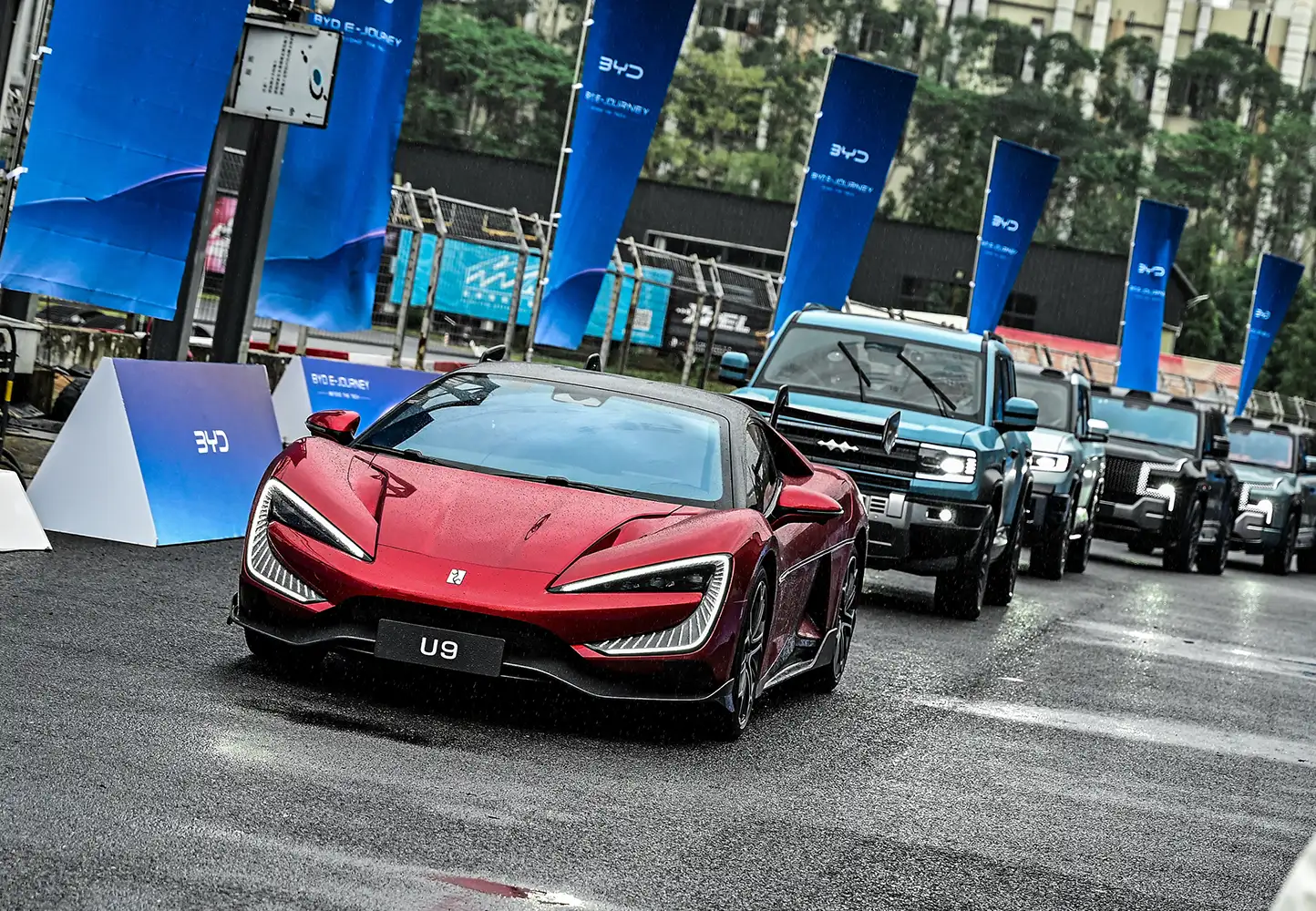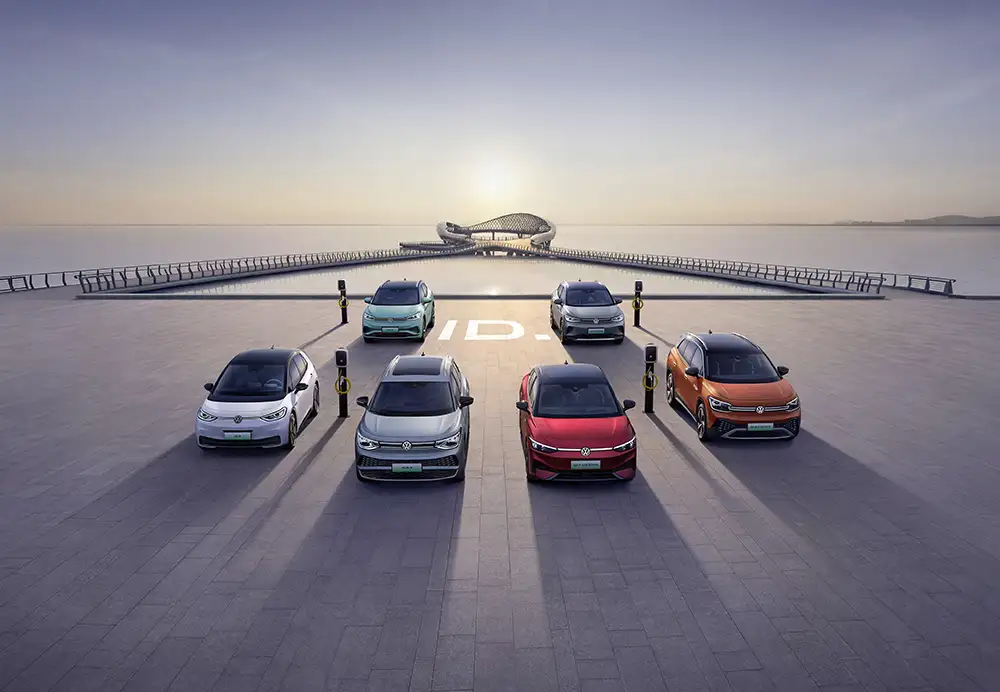
Foreign automakers adapt to China’s EV market shift
A generational shift in consumer preferences, with younger buyers gravitating towards new energy vehicles (NEV), combined with a growing sense of nationalism and government-backed subsidies, has been pivotal in the decline of Western automakers in China.
For many years, China’s auto market was dominated by joint ventures between foreign automakers and local Chinese companies. However, according to data from the China Passenger Car Association (CPCA), four out of the top five selling automakers in the first half of 2024 were local brands. BYD has become the top-selling auto company in China, overtaking Volkswagen–which had held the top spot for decades, largely due to BYD’s focus on electric vehicles (EVs) and plug-in hybrids.
The current market share of Chinese brands is around 60%. Li Yunfei, general manager of BYD’s brand and PR department, speaking at the 2024 China Automobile Forum in Chongqing, has predicted that the share of Chinese auto brands will reach 80% within the next two years. Former U.S. President Donald Trump warned American automakers in March of a “bloodbath” if he is not elected this November. A bloodbath may be inevitable, irrespective of the election outcome.
Western OEMs are facing fierce competition from Chinese automakers, who are rapidly improving their technology while simultaneously prioritising market share over profits. In addition, sales of EVs and hybrids surpassed conventional internal combustion engine (ICE) vehicles in China for the first time in July 2024, with a penetration rate of 50.84%. What does the future hold for foreign automobile original equipment manufacturers (OEMs) in the world’s largest passenger car market?
Historically, Volkswagen and General Motors (GM) have been two of the largest foreign automakers in China. The situation has been particularly challenging for Volkswagen, whose mass-market offerings have fallen well short of expectations in recent years. Volkswagen’s market share dropped from 19% in 2020 to 14% in 2024.
Rather than giving up, Volkswagen has announced a strategic shift to better compete in what it terms its “second home market.” In April, the company revealed plans for greater localisation with an “In China, For China” approach.

The focus is on strengthening technological capabilities and reducing costs. All R&D resources for battery electric vehicles (BEVs) will be centralised at Volkswagen China Technology Company (VCTC) in Hefei, in the eastern province of Anhui. This move aims to enhance agility and accelerate local decision-making and development processes. Volkswagen seeks to meet local expectations by delivering state-of-the-art vehicles across all key segments, while speeding up the time-to-market for new products.
Two purely electric platforms will be used for Volkswagen’s electric cars, the Modular Electric Drive Matrix (MEB) and the China Main Platform (CMP), with standardisation of digital architecture using China Electronic Architecture (CEA) in locally produced EVs. Under this new approach, production costs for Volkswagen’s BEV models are expected to be reduced by 40%.
A key focus is achieving cost parity with local competition for entry-level compact vehicles, by 2026. Volkswagen plans to maintain a solid combustion engine business to fund its transformation to intelligent connected vehicles (ICVs).
China was the top sales market for GM from 2010 to 2023, with profits reaching USD2 billion in 2018 before declining to USD446 million in 2023. In a staggering fall from grace for the iconic automaker, GM lost USD106 million in the first quarter of 2024, only its third quarterly loss in 15 years. GM has sunk from 15% market share in 2015, to 8.6% last year, with their U.S.-based brands suffering more than joint venture sales. GM has lagged in EV development and has seemingly misunderstood customer sentiment.
Despite some analysts’ knee-jerk predictions of the demise of traditional U.S. automakers in China, CEO Mary Barra insists that GM remains committed to the market it first entered in 1997. While the market landscape has shifted significantly and rapidly over the past five years, Barra believes GM still has an important role to play in the region’s growth.
GM is re-evaluating its operations, indicating that no options are “off the table.” In February, Barra indicated that GM may shift its focus further to the premium or luxury segment, with joint venture partners continuing to manufacture lower cost models.
During a Q2 earnings call on July 23, the company reported a second consecutive quarterly loss, amounting to USD104 million. Barra emphasised that the market in China is currently “unsustainable” due to the ongoing pricing war. In August, it was widely reported that GM is undergoing a major restructuring of its operations, including work with joint venture partners to restructure the business to make it profitable and sustainable. In April, GM had announced it was launching a record number of NEVs in China this year, including EVs and PHEVs, to meet increasingly diversified consumer needs.
GM has several joint venture partners in China. The most prominent ones include SAIC Motor Corporation and FAW Group. SAIC-GM produces and sells Buick, Chevrolet, and Cadillac vehicles in China. SAIC-GM-Wuling, which also involves Wuling Motors, focuses on producing and selling Wuling and Baojun vehicles, including mini-commercial vehicles and passenger cars. FAW-GM focuses on producing and selling light commercial vehicles under the Jiefang brand.
For 30 years, BMW has been deeply rooted in China, where the brand is seen as a status symbol. In August, BMW indicated that weakening demand and higher manufacturing costs in China were partially responsible for an 8.6% drop in net profit for Q2. Although, the company expects the economic situation in China to stabilise in Q3.
Despite these developments, BMW has enjoyed robust performance in China. Deliveries of almost 825,000 BMW and MINI vehicles in 2023, of which 100,000 were pure electric models, were a 4.25% improvement from the previous year. China accounted for almost one-third of global BMW sales.
BMW pursues a local-for-local strategy in China. At the 2024 Beijing Motor Show, the company announced a USD2.8 billion investment in its Shenyang production plant in Liaoning province, with funding to facilitate production of its next wave of electric vehicles. Production of the Neue Klasse will commence in 2026, which the company claims is “not a new chapter in the history of mobility” but instead “a whole new book.”
In a speech to investors, following the release of Q2 earnings, Oliver Zipse, chairman of the management board of the German car group, emphasised that e-mobility will continue to be the core drive technology of the future and BMW’s primary growth driver.
Stellantis, the owner of brands such as Chrysler, Dodge, Fiat, Jeep and Opel, has seen its vehicle sales in China plummet by 44%, dropping from 124,000 units in 2021 to 69,000 last year, according to a report by CNBC. The company has shifted strategy following the bankruptcy of its joint venture with Guangzhou Automobile Group in late 2022, opting for an “asset-light” approach that allows the automaker to continue operations while better utilising existing resources.
Tesla has been instrumental in transforming Chinese perceptions of electric cars, with many seeing it as the Apple-equivalent in the auto industry. However, even Elon Musk’s most successful brand is facing mounting pressure, forced to drop prices to compete against aggressive local opposition. Despite its popularity over traditional rivals, Chinese consumers have realised that non-Tesla EVs are viable options, and Tesla continues to lose ground to its biggest Chinese rival, BYD.
China has been exposed to the intellectual and physical property of foreign automakers for years. Sooner or later that exposure had to bear fruit. It’s too early to say that China has won the contest for EV supremacy, but they are currently a long way out in front.








